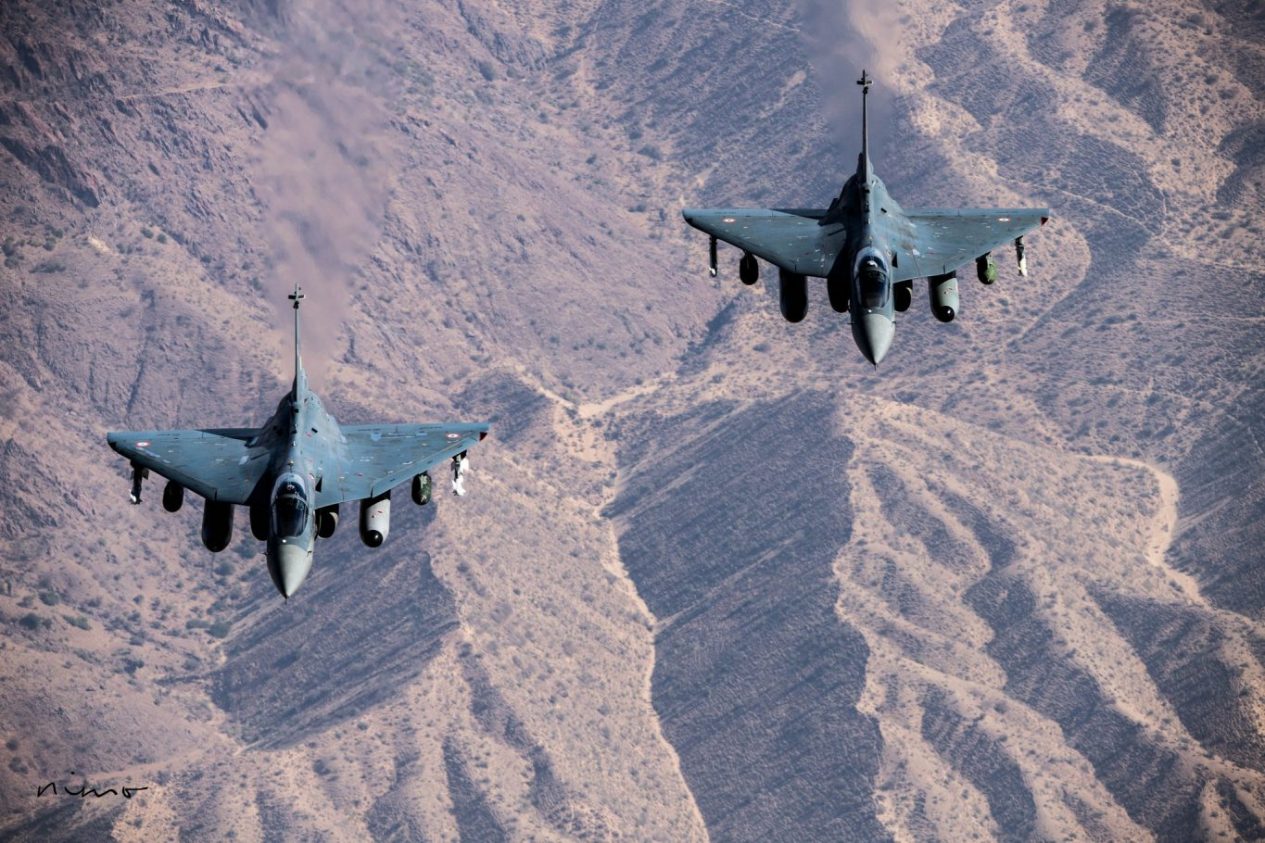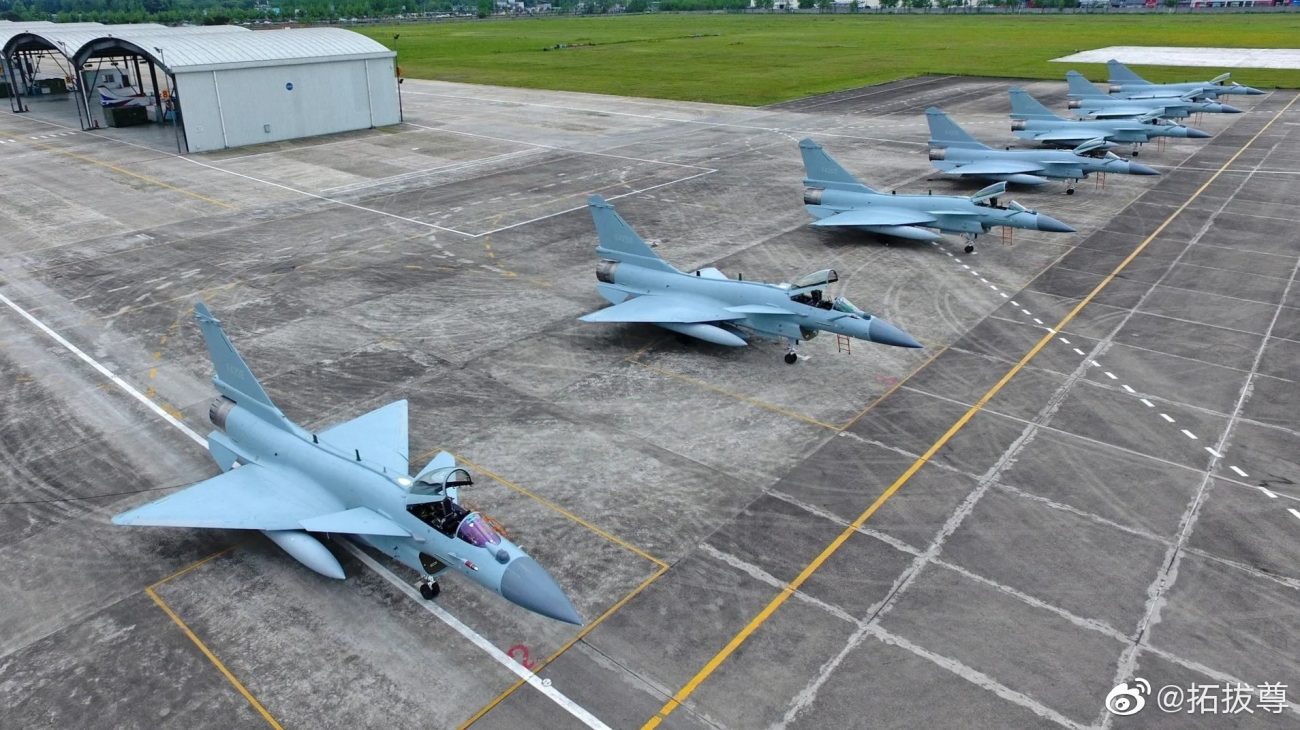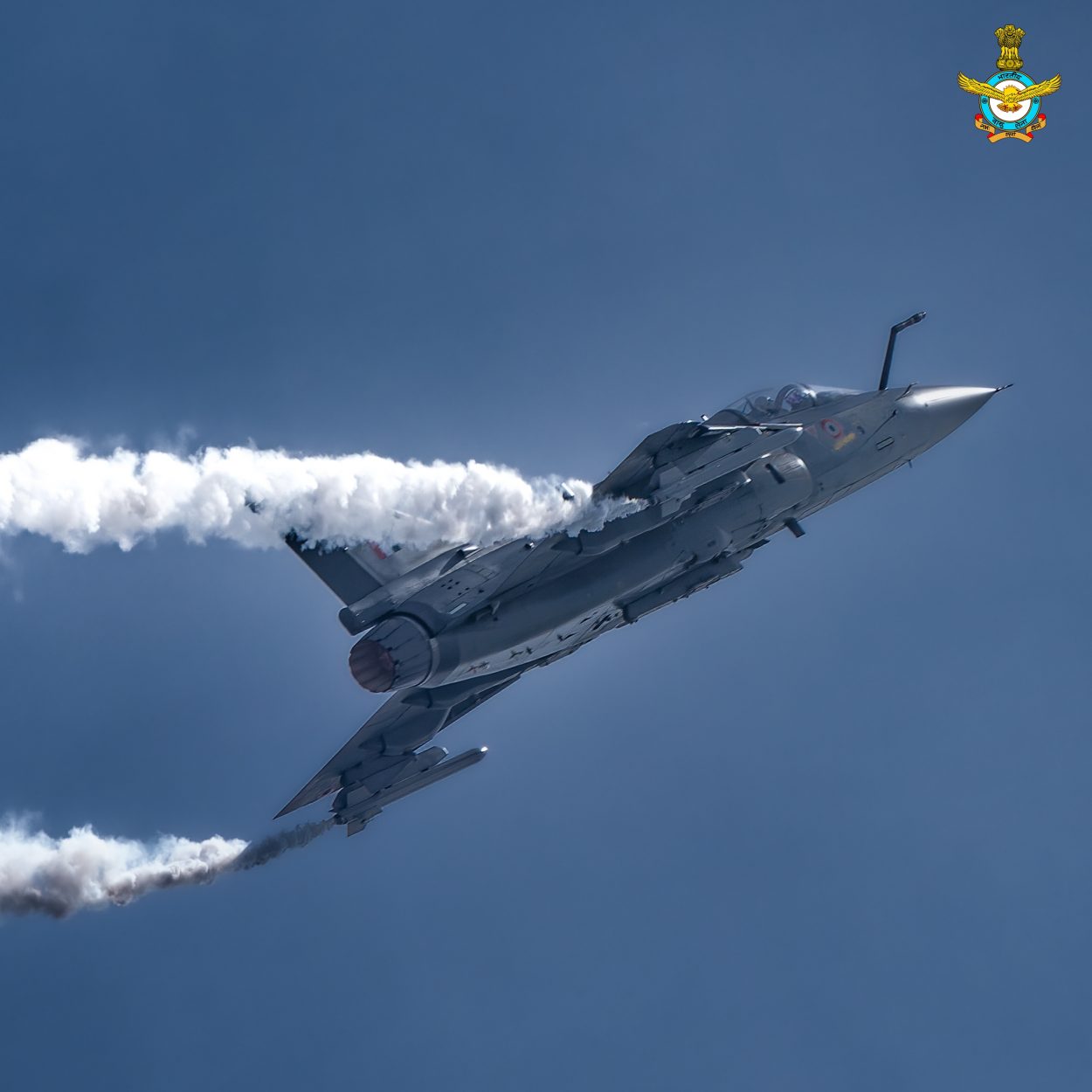The Indian Air Force’s (IAF) third ranking in the World Directory of Modern Military Aircraft (WDMMA) has triggered angry responses from Chinese netizens. India’s LCA Tejas appears to be in the punching line as the Chinese vent their anger on social media.
Pakistan’s F-16 Jet ‘Shot Down’ – But Which Fighter Pilot Downed It First – Abhinandan Or Amjad Javed?
While the Indian media welcomed the ranking, the Chinese media outlet Sohu was abuzz with disenchanted users questioning the IAF’s capability. Chinese report alleged that the WDMMA lacked information on the PLA Air Force, which led to IAF getting a higher ranking.
The WDMMA used a formula that took into account values related to the total combat strength of air forces, noted the EurAsian Times. A post singled out the ‘Make in India’ and mocked LCA Tejas that has, over time, become the poster aircraft for India’s defense indigenization.
The post claims that the Indian government has always insisted on the importance of “Made in India,” and yet the LCA Tejas was a disappointment. Subsequently, the Indian Light Combat Aircraft was compared with the Chinese J-10 fighter jets of the PLA Air Force.
Advantage Super Hornets: Is Boeing’s ‘Maverick Marketing’ Helping F-18 Jets Overcome Rafale Challenge For Indian Navy Deal?
While the two aircraft are very different in terms of class and combat capability, EurAsian Times decodes the claims made by Chinese netizens and examines the arguments.

Does Tejas Lag Behind J-10?
LCA Tejas was conceived as a concept in the mid-1980s, and by the early 2000s, it had taken its maiden flight. On the other hand, the J-10 was conceived roughly around the same time but took its first flight in 1998.
Further, the J-10 was made operational in 2005 and officially introduced by the Chinese government in 2007.
On the contrary, the Indian manufacturers produced several prototypes of Tejas, and after extensive testing, it was officially introduced in 2015, and the first batch became operational in 2016.
By this time, Chinese social media users claimed that China had unveiled the newser and upgraded J-10A and J-10B variants and its most advanced J-20 stealth fighter jet. An advanced variant of the J-10, the J-10C was also subsequently launched and has since been exported to Pakistan.

The Indian government has also placed an order for 40 Tejas variants in the “initial” and “final operational clearance” configurations, which are in the pipeline. The first of the Mk-1A aircraft is to be delivered in 2024, while the entire delivery is to be completed within the next nine years.
A more advanced variant, the Mk-2A, is also in the design and development stage.
It is, therefore, true that though the LCA Tejas and the J-10 entered development almost at the same time, the LCA Tejas program ran into rough waters and has lagged behind the J-10 fighter jets and its three variants.
LCA Tejas Vs J-10 Fighter Jets
LCA Tejas is a single-engine, light-weight, multi-role, supersonic aircraft of the fourth generation produced by the Hindustan Aeronautics Limited (HAL) for the Indian Air Force. On the other hand, the J-10 is a single-engine, medium-weight, multi-role aircraft designed by the Chengdu Aircraft Design Institute (CADI).
Both aircraft are capable in their own right. However, the J-10’s development, deployment, and upgrade trajectory have been more constant, while the HAL aircraft has lagged due to delays. Both the J-10 and the Tejas represent the techno-industrial efforts of both countries.
The J-10 was a heavily redesigned, modified, reverse-engineered version of the Israeli Lavi program, which saved the Chinese from having to create an entirely new plane. Under pressure from the US, the Israelis had to put the Lavi on hold.
The LCA Tejas, on the other hand, received very limited support from Dassault in the late 1980s, with the rest of the development carried out entirely by Hindustan Aeronautics Limited (HAL), despite significant technological challenges, as previously noted by EurAsian Times.

Both planes have single engines and delta wings, with the J-10 being significantly longer and larger. It had ventral air intakes, swept-front canards, and low-wing wings. The Tejas Mark-1A has a high-wing layout with body-side air intakes, making it appear smaller and more agile.
The J-10 has been in operation since 2005, with over 500 aircraft of the J-10A, J-10B, and the most sophisticated J-10C – in service. The LCA Tejas Mark-1A, on the other hand, was only ordered last year, and the IAF will get 83 of them starting in 2024.
The J-10B was a thrust vectoring variant that flew with indigenous WS-10B engines, giving it superior mobility in dogfights. The J-10C, the most advanced variant of the aircraft, has also been integrated with the indigenous WS-10 engines.

Some experts claim Tejas has an advantage in high altitude fighting, sustained turn rate, climb rate, and cruising speed since it requires less thrust to maintain sustained flight. A better engine, which is apparently in the works, can even improve its low thrust-to-weight ratio.
The smaller airframe of LCA Tejas also gives it a slight edge in Within Visual Range (WVR) battles, where it becomes more difficult to locate.
Active Electronically Scanned Array (AESA) radars are integrated on the J-10 B and C, as well as the LCA Mark 1A and future Mark 2. The Tejas Mk-1A and Mk-2A variants are expected to be fitted with the indigenously developed Uttam AESA radar, a breakthrough announcement that was made in December last year.
The J-10B and C can fire the medium-range air-to-air missile, the PL-10 and the ultra-long-range PL-15 Beyond Visual Range (BVR) missile – the latter outranges all the missiles in its class in the world at 300 km, according to Chinese claims.

On the other hand, the LCA Mk-1A will be able to launch BVR missiles like the Derby, and this capacity is already included in the current Tejas. For the Mk-1A, an indigenously developed BVR missile (ASTRA Mk 1) has been chosen.
The Indian Defence Research and Development Organization (DRDO) has successfully installed Israeli Python-5 air-to-air missiles onto the LCA Tejas. According to DRDO, the Derby BVR air-to-air missile is also being tested to demonstrate its extended potential.
Additionally, India has also ordered HAMMER missiles from France to enhance the capabilities of its LCA Tejas jets.
Tejas – More Reliable Than Chinese Jets?
Though the two fighters are somewhat comparable, western experts have called the Indian LCA Tejas a far more reliable aircraft than anything that Beijing can offer.
Western observers believe that China’s aircraft are mostly based on stolen and reversed engineered technology, while the LCA Tejas is powered by both indigenous and prooven western technology.
The fighter is a brilliant example of international cooperation, according to Foreign Policy magazine. The Tejas’ F404 engine was supplied by GE, and Israel Aerospace Industries supplied the fighter’s radar and electronic warfare equipment (IAI).
The report further says It further says that even though the program encountered several hiccups in its formative years, it is well on track now.
However, the Indian Air Force is currently the only customer of the Tejas, with a whopping 123 aircraft to become a part of the Indian fleet soon.
On the other hand, China’s J-10 is in service with China and Pakistan, with the latter having received the J-10C variant only recently.
It has been widely believed that China armed its all-weather ally Pakistan with the advanced J-10C to counter the power of India’s Rafale jets, as has been noted by EurAsian Times.
- Contact the author at sakshi.tiwari9555@gmail.com
- Follow EurAsian Times on Google News




